Cora and I strolled the “streets” of Lafayette Cemetery during our visit two years ago. A year later I chronicled our visit to Lafayette Cemetery. Here is a revisit to that city of the dead that was founded in 1833 and to this day still welcomes new residents. This post reprises some photos from the previous posts along with some new images. Some of the images in this and the previous posts are as originally shot, either in color or monochrome. Others have been edited to depict different moods.
New Orleans’ Garden District is a historic neighborhood that dates back to 1832. In the midst of a district noted for its many historic old mansions is one of the small “cities” within New Orleans. Those are the cities of the dead, the historic cemeteries that dot the Big Easy. You can do bawdy Bourbon Street, the music clubs on Frenchman Street, go steamboatin’ on the Mississippi River and have a beignet at Cafe du Monde but if you don’t visit one of NOLA’s cities of the dead you’ve missed out on one of her most fascinating attractions.
Lafayette like NOLA’s other cemeteries is indeed a city. The buildings are the eternal homes of the departed. Since New Orleans is below sea level it was necessary to build above ground resting places. Wealth and poverty determined the size and embellishment of these everlasting homes.
The cemetery is laid out in a grid plan with “streets” or “lanes” that run at right angles forming city blocks of buildings just like many typical cities.
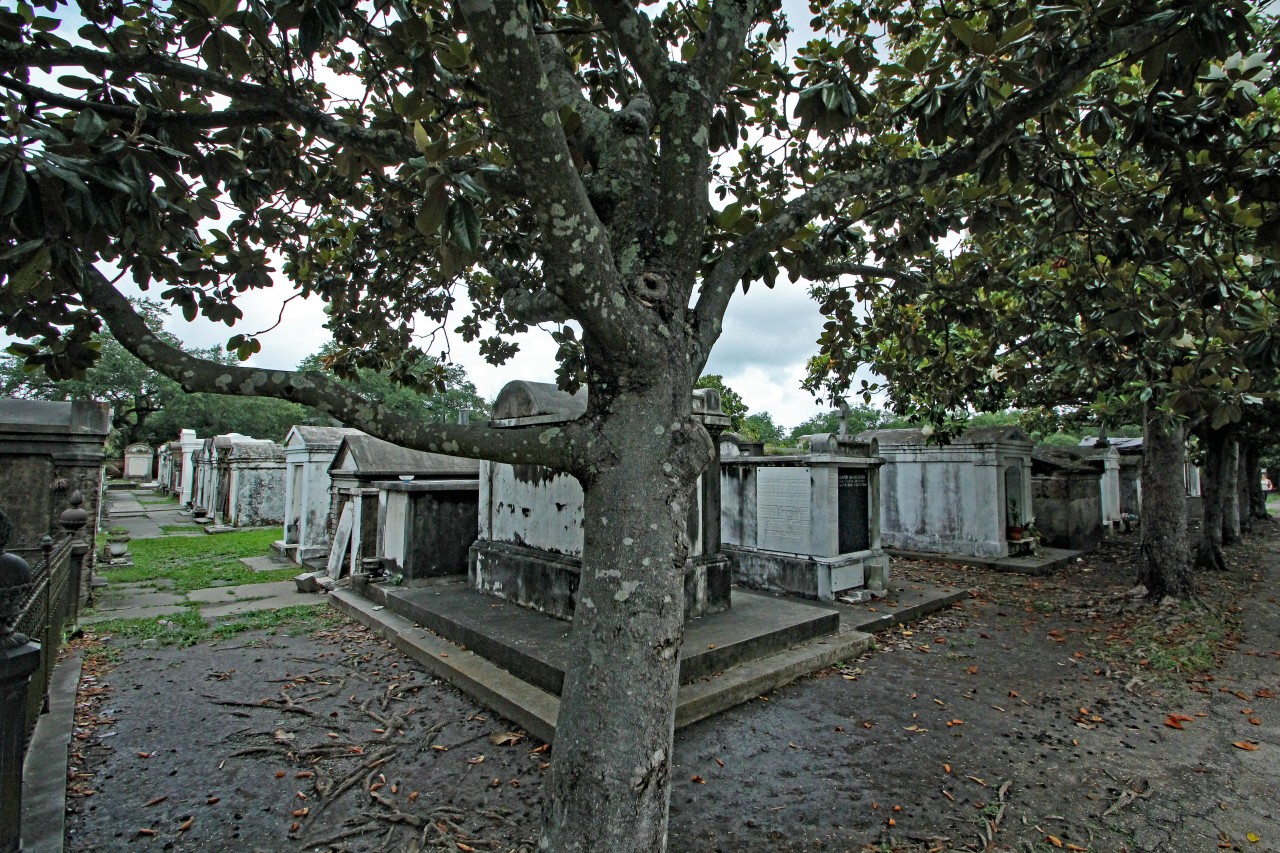
A street corner showing the block layout

View down a long street in filtered sun
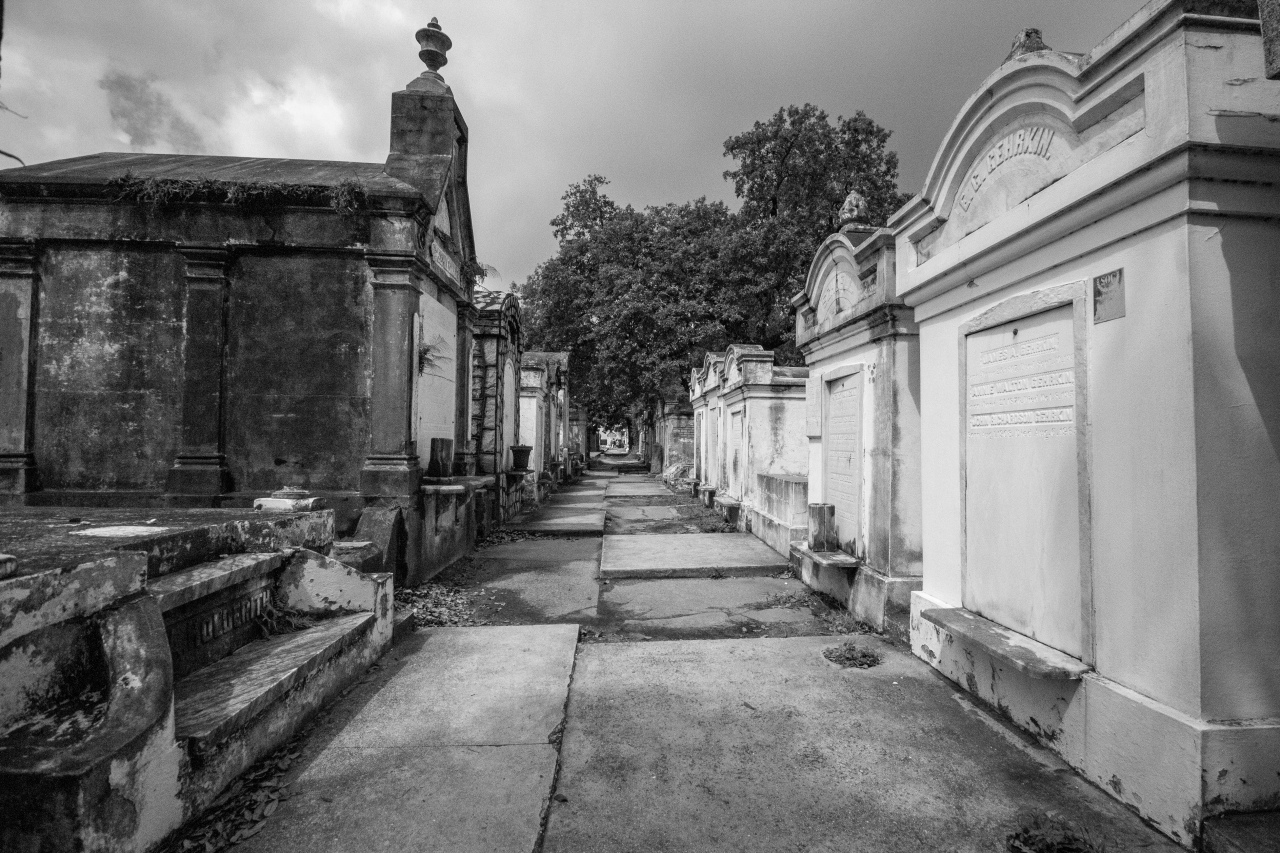
In monochrome
Once you step through the gates of the cemetery you enter a different world. It’s a stark place populated with monuments colored in doleful shades of gray, many cracked, broken and in varying stages of disrepair. The streets themselves are fractured and littered with leaves and fallen debris from crumbling monuments.
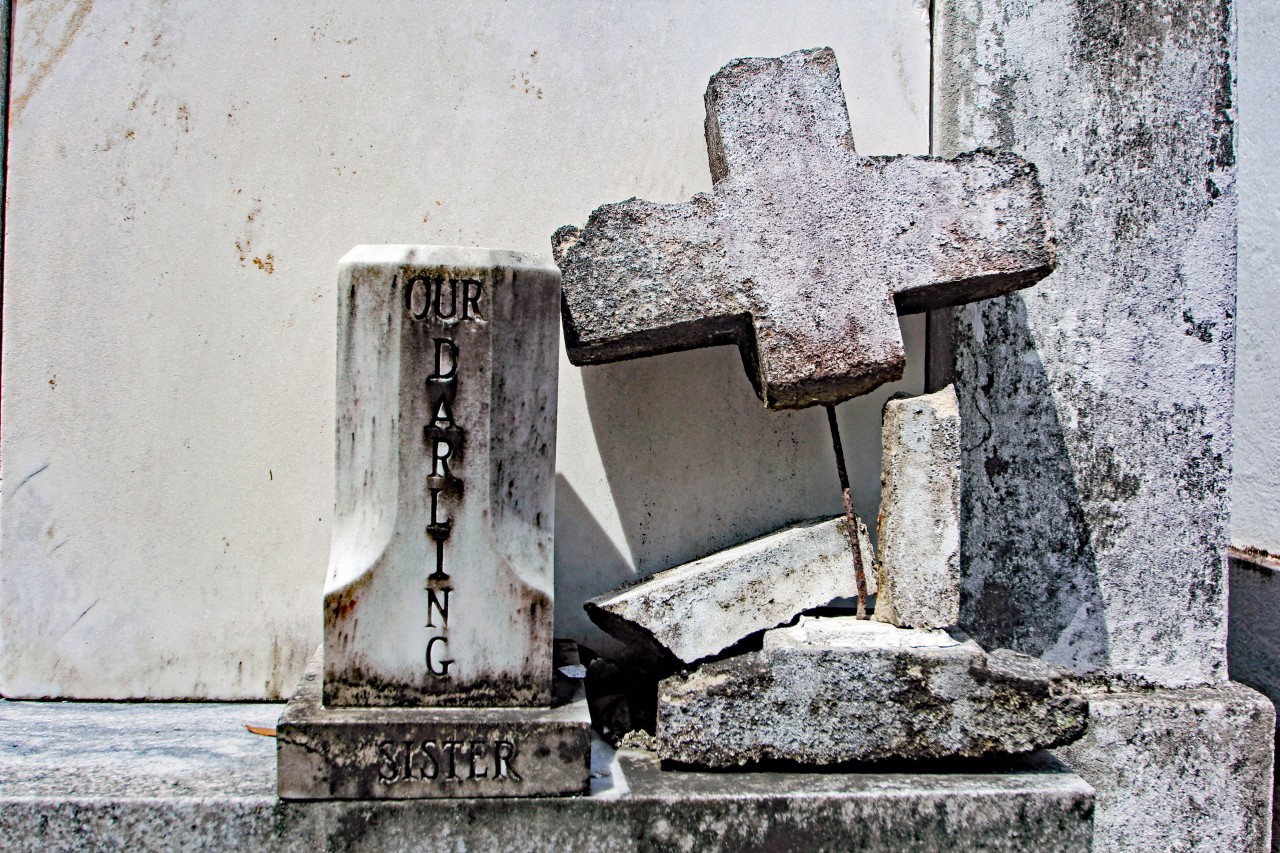
The remains of a monument to someone’s “Darling Sister”
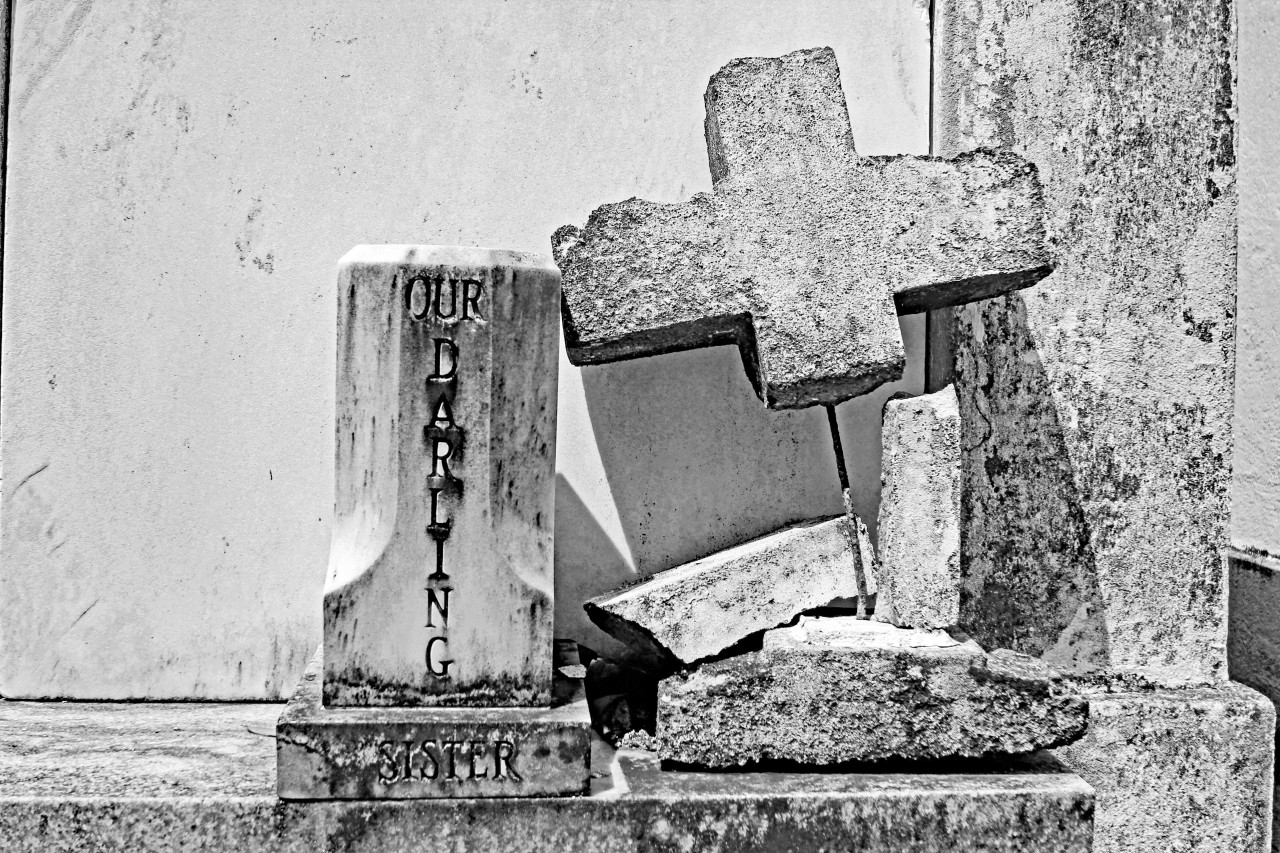
The broken monument in monochrome
In Lafayette you can also find splashes of beauty that contrast with the gray gloom. Trees and vegetation dot the streets and decorate some of the monuments.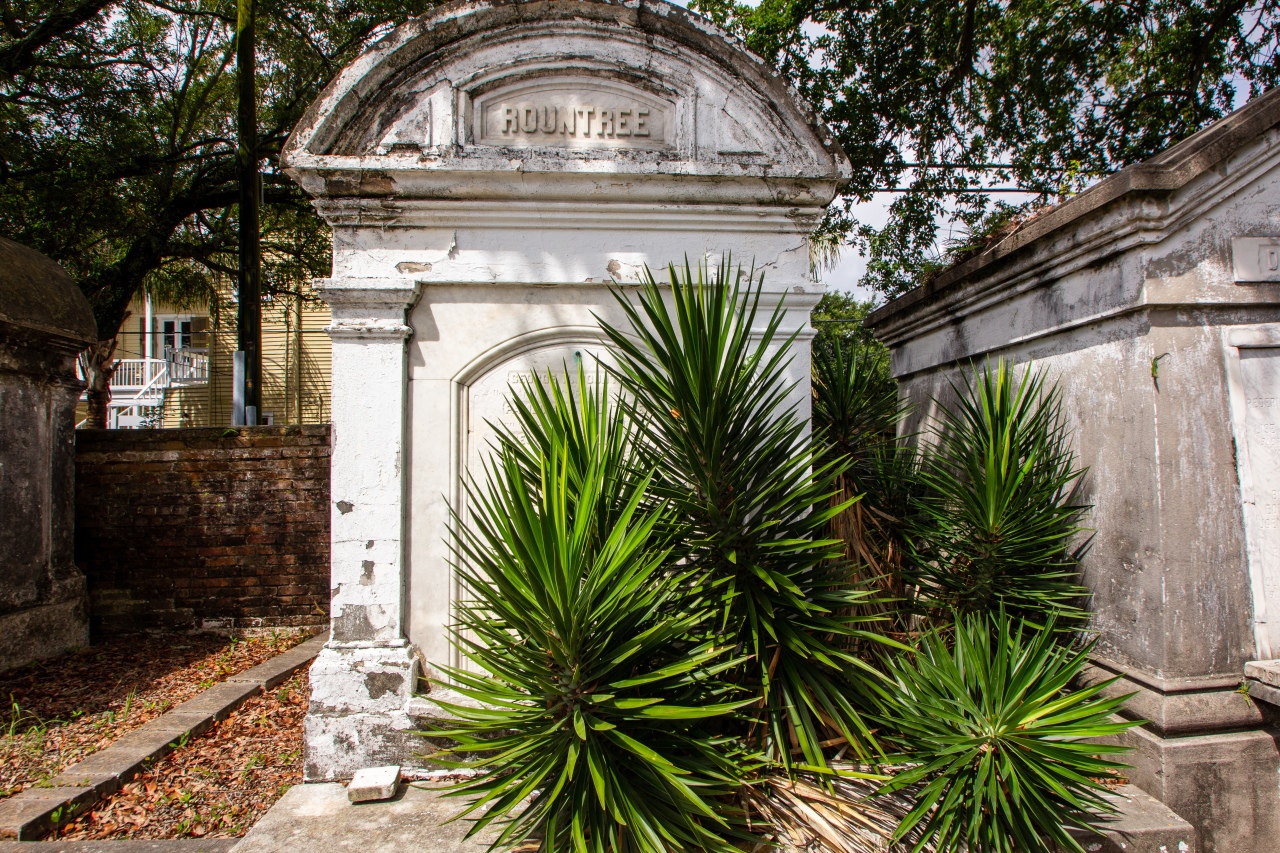
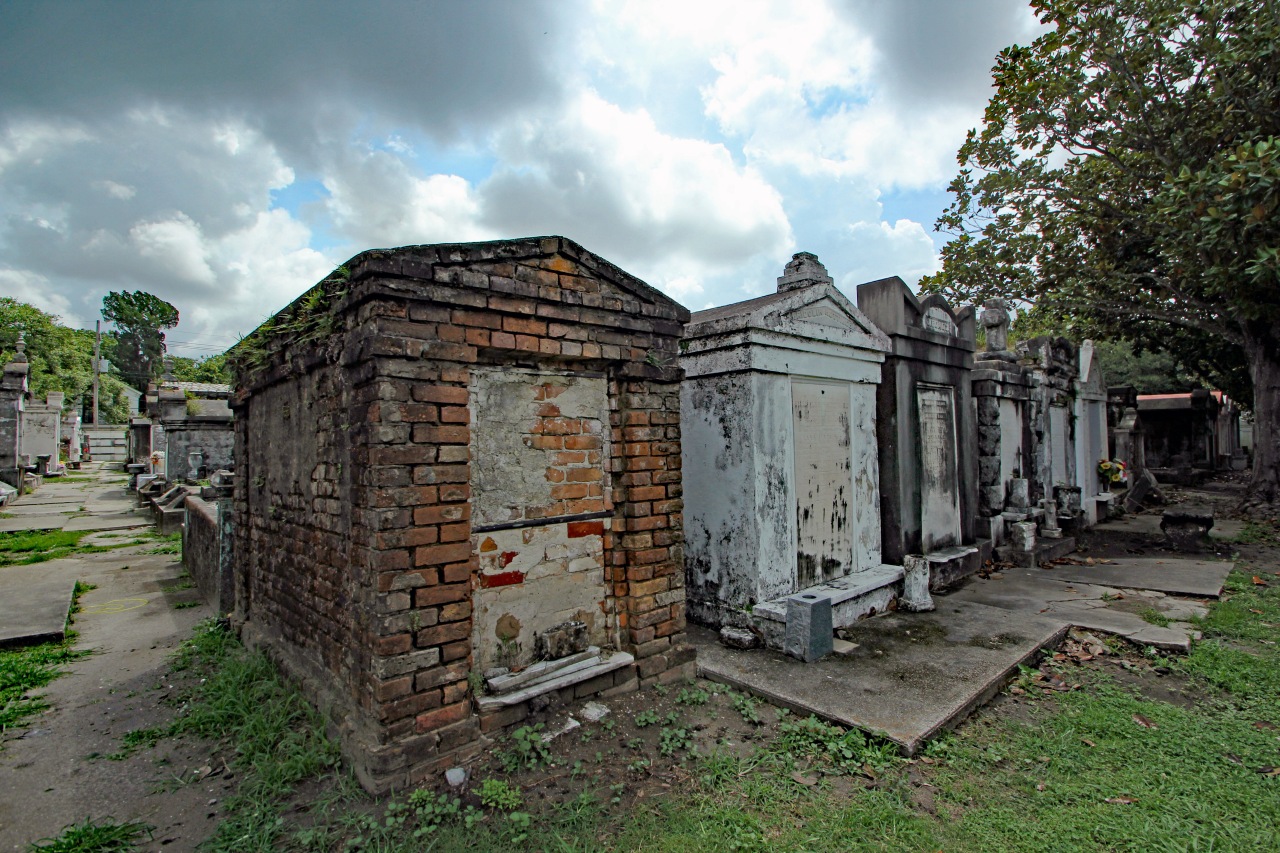
Vegetation and a lone exposed brick tomb add color to the gray city
The leaves add color. There’s greenery that fills many of the monuments’ fissures as nature seeks to take back what is hers. It’s the irony of new life decorating the homes of the dead.

Ferns find life in the exposed brick of a tomb
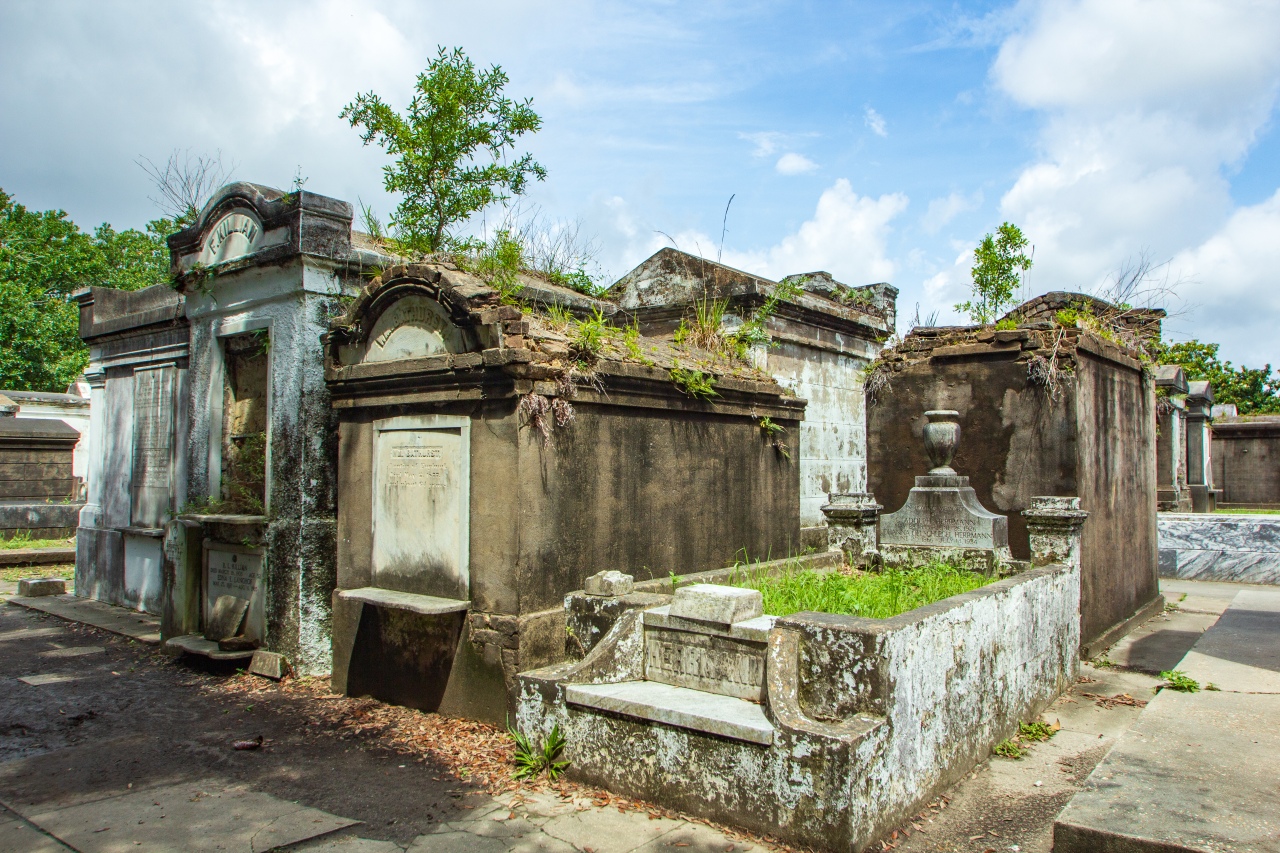
New life springs from the homes of the dead
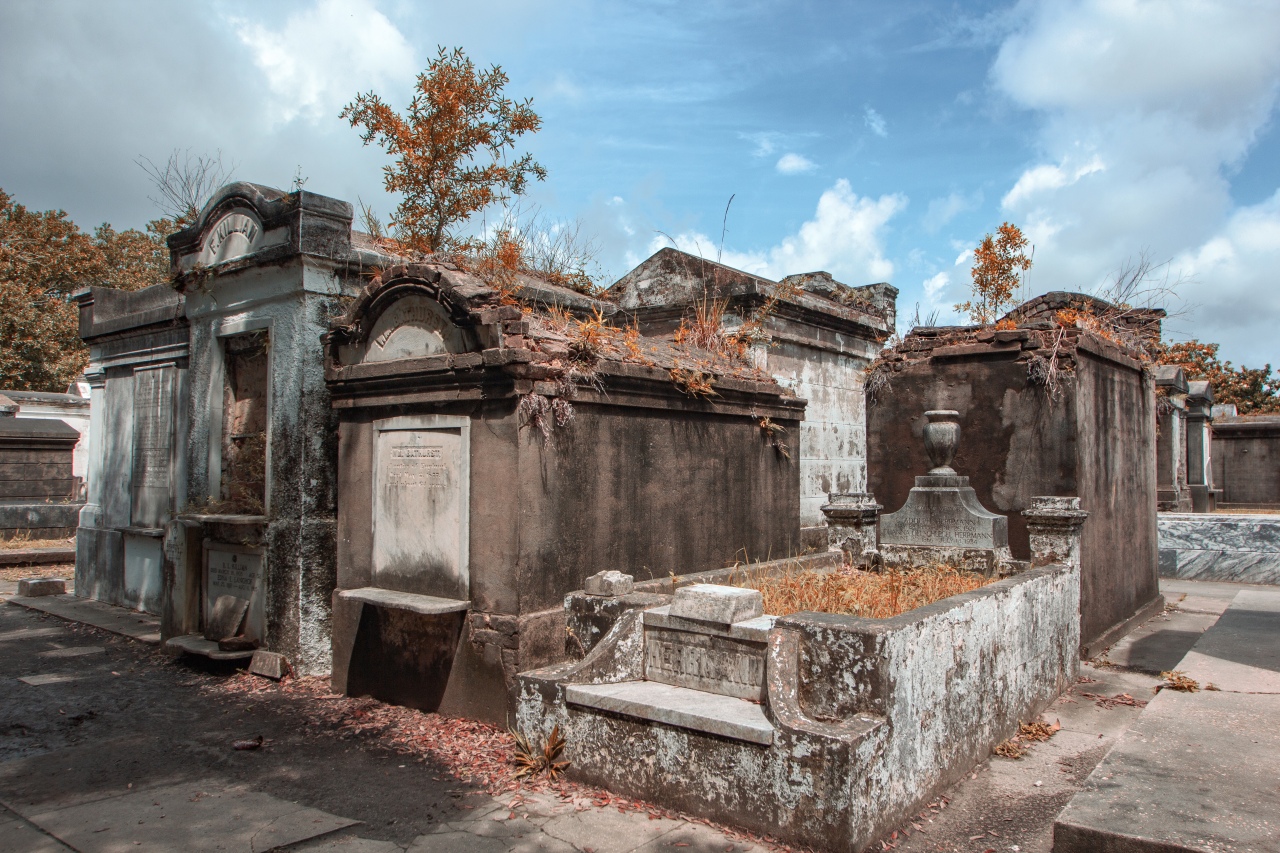
Some editing “kills” the green vegetation
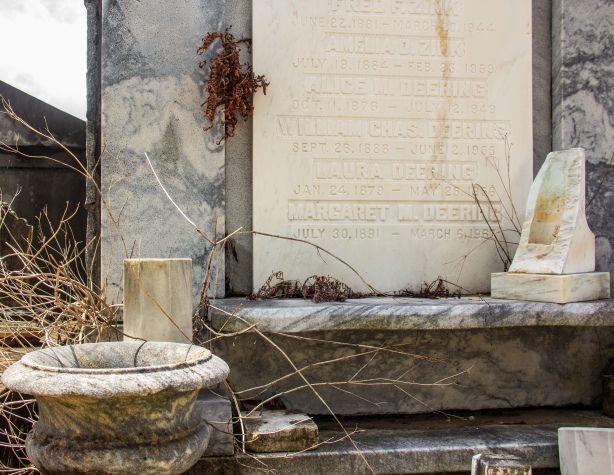
One lone plant hangs from a tomb where other vegetation failed and joined the residents in death
Cemeteries are not just vaults that house the dead. They can be repositories of history. They reveal the events of years, decades and centuries past. A look at the ages of the deceased in 19th century New Orleans reveals a relatively low life expectancy. Given the humid swampy environment of New Orleans the diseases that plagued New Orleans during the 19th century included cholera, smallpox, malaria and particularly yellow fever.
During the 19th century the mortality rate of New Orleans went from a low of 36 per 1,000 in the late 1820s to a high of 1 in 15 during the summer of 1853 when more than 12,000 people died of yellow fever. During bad times the wealthy had the means to pack up and head for safer climes. Not so for those of lesser means. Yellow fever particularly ravaged immigrants, children, laborers, and the poor (some things never change).

In the mid-19 century death overwhelmed the children of the Scheu family. Note the dates

While one can walk the grounds of NOLA’s cemeteries and be fascinated by the various tombs and the stories behind them I recommend finding a good tour guide who can uncover many more stories locked in those buildings.
Lafayette Cemetery is the resting place of Judge John Howard Ferguson, the judge in the famous Plessy versus Ferguson, a case that eventually made its way to the Supreme Court and established the concept of separate but equal. There are graves of Civil War dead with epitaphs describing the place where they perished. The Karstendiek Tomb located in the Lafayette Cemetery served as the inspiration for Lestat’s tomb in the film An Interview with the Vampire.
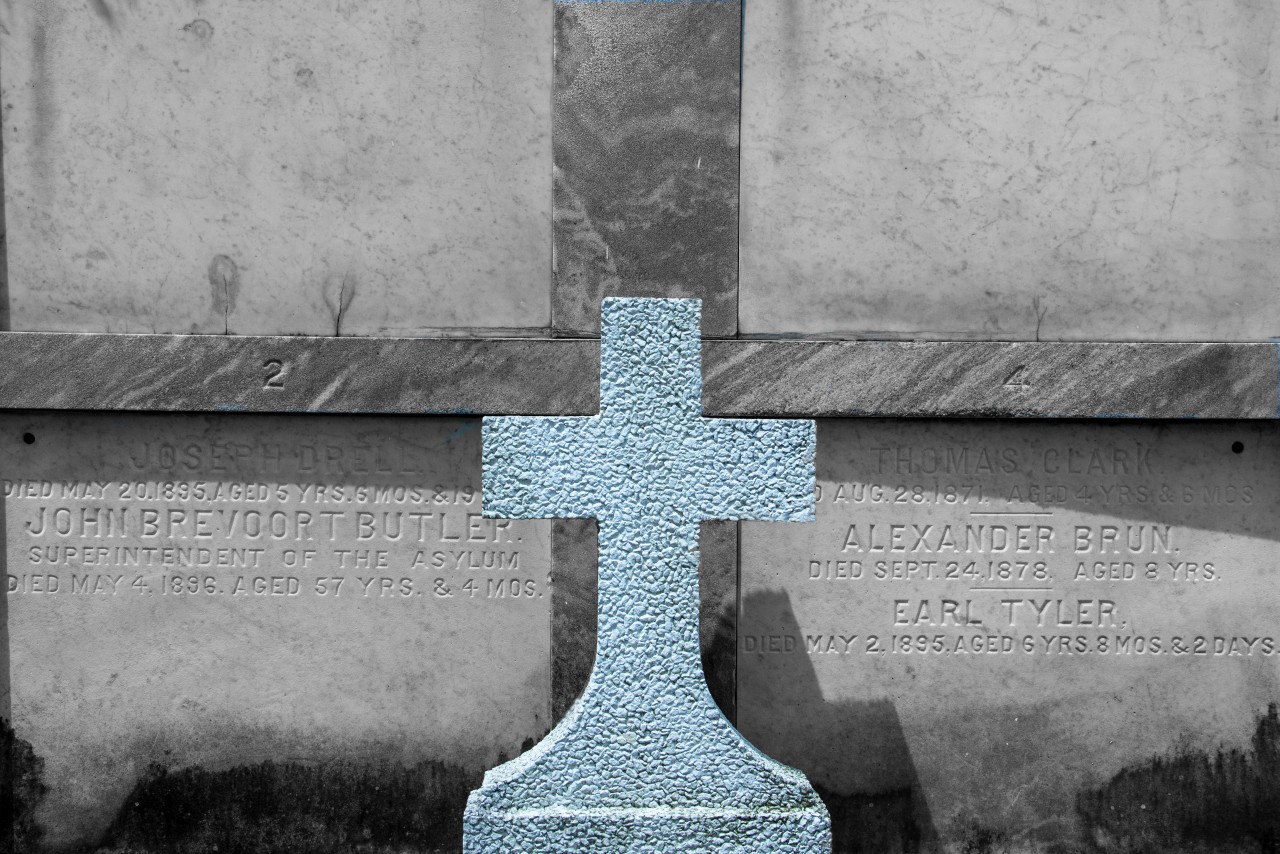
A cross as shot stands before a tomb edited for a vintage appearance
Above, two views of the same image. As shot on the left and color edited on the right.
Of the many graves and inscriptions that we saw perhaps the one that touched me the most was that of Mabel L. Shaw (below). During her brief 46 years (1872 – 1918) on Earth she was remembered as a woman who “never did a mean act nor said an unkind word” 




I like to visit cemeteries too!
LikeLike
Collections of buried stories. Thank you so much for visiting.
LikeLike
I’ve never seen such a place as this. Fascinating!
LikeLike
It’s a fascinating place in a fascinating city. NOLA is now and again my favorite city. The food is wonderful, and you don’t have to go to Emeril’s and spend top dollar to get good food. There’s excellent music almost everywhere; on the streets and in the clubs. The clubs don’t charge cover but be ready to tip.
It’s a confluence of cultures; French, Spanish, Italian, African, Caribbean.
And of course there are the voodoo shops which I found interesting but creeped Cora out. I had to coax her into walking into one.
Just avoid NOLA at Mardi Gras.
LikeLike
I often visit cemeteries while on vacation. You took Great photos!
LikeLike
Thank you so much. We just recently visited what one might call a cemetery straight out of the Old West.
LikeLike
I look forward to seeing your pictures!
LikeLike
My wife and I are not religious but often visit churches and cemeteries on our vacation. They are very atmospheric places to photograph. Nice post and photos Paulie.
LikeLike
Thank you for the kind words.
My wife is quite religious. Me, not so much. It works out well. I walk around at take pictures while she prays.
LikeLike
How interesting!
LikeLike
Thank you Sheree. NOLA is an interesting city from the cemeteries to the history the food, music and even voodoo shops
LikeLike
Hi. I haven’t been to New Orleans. It’s such a lively and historic city, I know I should visit. I hadn’t known about the cemeteries. Thanks for this article.
Neil Scheinin
LikeLike
You’re very welcome Neil and thank you for visiting. NOLA is one of my favorite cities and that’s from someone who prefers a trout stream to urban life. New Orleans is a unique confluence of cultures; French, Spanish, Italian, African and Caribbean. My suggestion is that you avoid it during Mardi Gras.
LikeLike
God, I love cemeteries, visit any and all when I’m in a new city. You capture the beautiful decay of the NOLA Cities of the Dead. Just in time for Halloween, but eternal, too.
LikeLike
Thank you for the tour, Paulie. I have never visited the cemetery before. These are great photos.
LikeLike
I learned how fascinating cemeteries can be with visits to the old cemeteries in and around Boston and some of the cemeteries at Civil War battlefield sites.
LikeLike
I remember the Granary Burying Ground in Boston. Hubby helped me find Samuel Adams Grave.
LikeLike
There’s a certain looming darkness over NOLA, I covered this in one of my essays:
http://harvardmilk.com/2019/11/14/water-and-fragments/
LikeLike
Thank you for visiting my site.
That’s an excellent essay you wrote. I don’t imagine that you’re waiting for the NOLA Chamber of Commerce to publish it though.
My week in New Orleans was spent looking through tourist’s eyes. That said this tourist’s eyes made note that while the streets in the French Quarter were as smooth as a billiard table a short drive into the Treme was along streets pocked with holes that looked like bomb craters.
LikeLike
HI Paul,
Your photos really capture the stillness and emptiness … life at the end. It’s sobering.
Mabel L. Shaw left the impression that she “never did a mean act nor said an unkind word.”
That this inscription touched you above all the others reveals a lot. No matter how long one’s list of accomplishments or the material goods we’ve acquired or left behind … our legacy is ultimately defined by our humanity.
Sadly, it’s something in short supply of late,
eden
LikeLike
Hi Eden,
These old cemeteries, I like to call them graveyards, have so many stories to tell. NOLA’s talk about Yellow Fever.
The 19th century western cemeteries tell stories of rugged pioneer life, mining accidents and child mortality. They also tell a story about bigotry as Chinese cemeteries were separated from the town’s cemeteries.
We went to the Lafayette Cemetery in NOLA’s Garden District, which is a beautiful part of town. If you go I suggest you visit the Garden District but for a cemetery to the St. Louis Cemetery in the Treme. You are required to hire an approved guide to see that cemetery but that’s a good thing. Without a guide, you miss a lot of history.
Thank you for visiting.
Paul
LikeLike